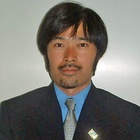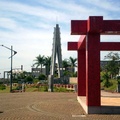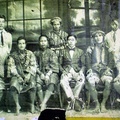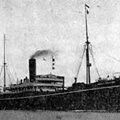The Bairro Oriental (Oriental neighborhood) of São Paulo - living within the chaos of its walls, the same question crossed my aching mind. ‘Why did these Japanese people traverse the ocean and build a town for themselves half way cross the planet?’
Ordinarily, I am in charge of the subjects of ‘Japanese language’ and ‘Japanese culture’ at a university in Brazil. When conversing with Brazilian college students, I often come across the stereotypical idea that Japanese people are unsociable and reclusive. Well, I feel like even the Japanese people themselves hurl out remarks about how “Japanese people are quite reclusive and too timid.” In opposition to such views, I sometimes hear the Issei immigrants object, saying “That isn’t so. If the Japanese were so reclusive, we wouldn’t have come all the way here to the ends of the world.”
In reality, without even needing to mention the example of the accomplishments of the wokou and Nagamasa Yamada in the Kingdom of Ayutthaya, the people of the Japanese islands have founded overseas settlements, or Japantowns as they are called, in Thai, Vietnam, Luzon, and various parts of East Asia, since the medieval times. Excluding the period of national isolation during the Edo period, well, even during this isolation period, our ancestors crossed the oceans and interacted with the people of various regions.
In the present day, the people of this island further strengthened this tendency. Using the rapidly developing, global communication network, they advanced into the New World and various parts of the planet. Though it hasn’t been long since our ancestors established connections with the New World, by the start of the Meiji restoration in 1868, laborers called gannen-mono were heading to Hawaii. The kanyaku imin of Hawaii in 1885, Argentina in 1896, Mexico in 1897, Peru in 1898, and Brazil in 1908; within this chain of immigration, the Japanese people founded their own settlements, their Japantowns1, in various places of the New World.
The first Japanese immigration to Brazil is said to have started in 1908 with the Kasato Maru immigration of 781 people (12 other free travelers). Though it is known that castaways, navy personnel, legations, a few free travelers and merchants had been in Brazil before 1908, it is reasonable to say that the Kasato Maru immigrants as the first modern group to Brazil.
Though the aim of the Japanese immigration to Brazil was agricultural for the most part, there was a Japantown called the “Conde District” in São Paulo during World War II. Apart from this, many Nikkei lived in the Pinheiros district and along Cantareira Street, where the center plaza of municipal management was once located. After the war, a new Japantown was formed which centered around Galvão Bueno Street, a hundred meters west of the Conde District. Since the 70s, this area has expanded due to immigrants from Taiwan, Korea, and the Chinese mainland, creating a district of ethnic commerce and cooperation. This section of town is now referred to as the Barrio Oriental. The same area has molted from a Japantown and is now recognized as a bustling tourist spot and the Asian commerce center of São Paulo.
Apart from this area, the Japanese settlements called the shokuminchi (colonies), centering around the inland districts of São Paulo and Paraná, were founded before World War II. Without going into the controversy of whether or not the term ‘city’ is appropriate, the Bustos immigrant settlement of 1928, called the “Bustos Japantown,” contained a modern agricultural studies facility, a sawmill, repair shops, a rice-cleaning mill, a hospital, nine Nikkei elementary schools, and even a Shinto shrine. Aside from agriculture, this settlement also formed a town area called “Centro,” making it reasonable to say that Bustos can be included in the category of “Japantowns.”
In this column, I would like to convey the history and current state of the Japantowns in Brazil I have visited, while simultaneously being conscious of the question purposed at the start of this introduction.
Note:
1. The use of the term “Japantown” here loosely refers to the area where people from the Japanese islands, who identify with being “Japanese” (日本人; japones; japonês), and their descendants, work and live in dense populations. From the frequent use of the term “Nikkei,” it may seem more appropriate to call the areas “Nikkei town.” However, being that the term “Japantown” is used so often, I have chosen to use the word “Japantown.”
© 2007 Sachio Negawa






